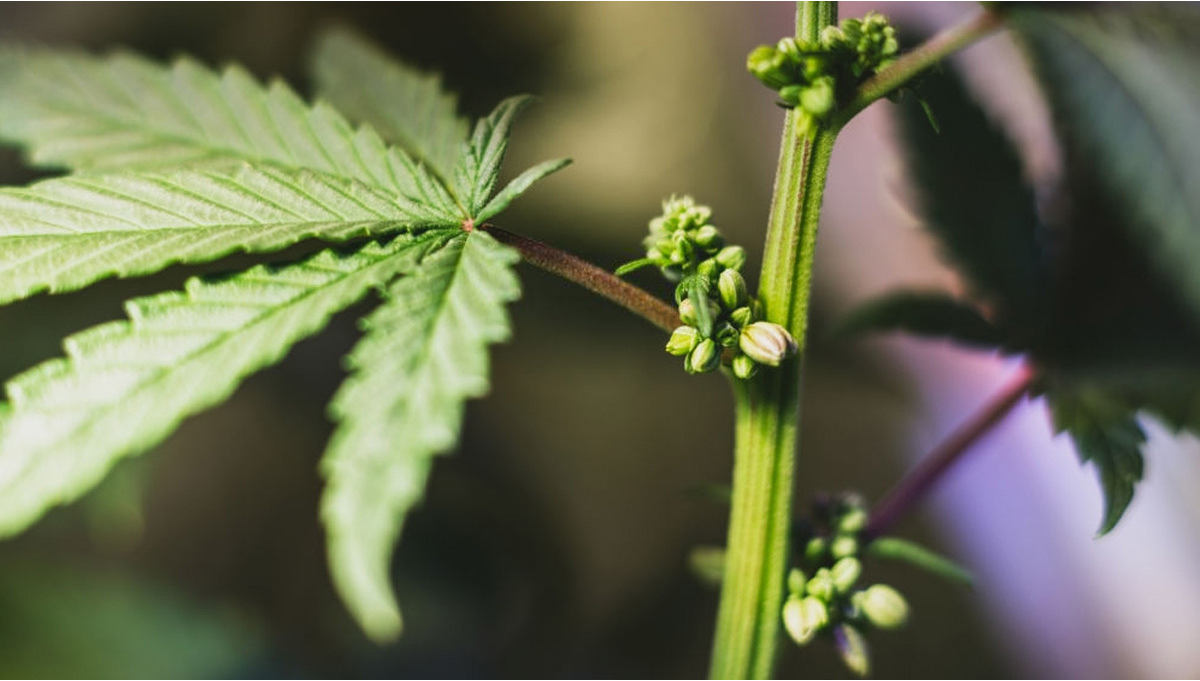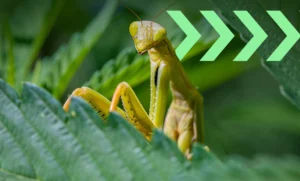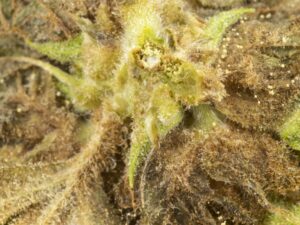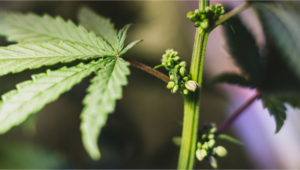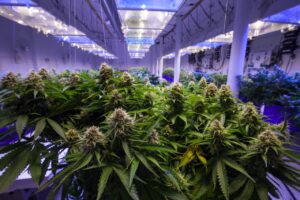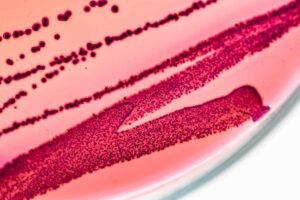Cannabis is a dioecious species, which means it reproduces via individual male and female plants. When male cannabis plants become sexually mature they release pollen. Female cannabis plants capture that pollen via sticky flowers (a.k.a. buds), and when fertilized produce seeds.
Fertilized female cannabis plants generate smaller flowers with significantly less terpene, flavonoid, and cannabinoid content than unfertilized females. This is because when female cannabis plants undergo an extended period of virginity they will actively increase the number and size of their female sex organs, resulting in larger, more plentiful buds. This increase in pollen-receptive tissue seems to be an evolutionary adaptation designed to make it more likely that the females will fertilize in scenarios when males are extremely uncommon.
Today, most cannabis growers take advantage of this adaptation and take steps to prevent fertilization and maximize yields. They do this by isolating female cannabis plants from males or they buy feminized seeds, which are specially bred to only produce female plants.
However, despite growers’ best efforts, there are rare cases where female cannabis plants develop male sex organs, which can produce pollen. These hermaphrodite plants, also called “herms” or “hermies”, will produce predominantly female flowers; however, within the buds emerge banana-shaped anthers which can produce and release pollen.
Causes of hermaphrodite cannabis plants
Stress
Cannabis plants herm in response to stress. It is an evolutionary adaptation designed to be a last-ditch effort for reproduction in situations where the plant is in danger. Growers can reduce the likelihood of a hermie plant if they can prevent the following stresses:
- Too-hot or too-cold growing environments
- Inconsistent start and stop timings for light cycles, as well as light leaks or other disruptions during the night
- Using lights that are too weak, too strong, or have a spectrum unsuitable for cannabis cultivation
- Placing lights too near or too far from plants
- Underwatering, overwatering, overfeeding, or underfeeding
- Using subpar nutrients or applying them at the wrong time
- Root-bound plants, plants with rotted roots, or inadequately aerated growth media
- Defoliating too much, too frequently, or at the incorrect time from your plants
- Diseases and pests
Genetics
Certain cannabis varieties appear to be more sensitive to stress than others, which may be due to an underlying genetic mutation. However, that mutation has not yet been identified.
Some growers believe that plants grown from feminized seeds are more likely to become hermaphrodites. In fact, feminized seeds are created by treating female plants with a chemical, typically silver nitrate, that causes them to herm. Breeders then collect the pollen and use it to fertilize other female plants. The resulting seeds are all female because neither parent can pass along a Y-chromosome.
The belief is that the hermaphrodite parent that contributed the pollen passed along epigenetic traits to the offspring that make it more prone to herming. However, this theory is anecdotal, and it has not been verified in any peer-reviewed studies.
Over-ripe buds
Lastly, growers who let their plants flower too long run the risk of having plants herm. Again, this is a last-ditch effort of the plants to reproduce. They have grown large buds in hopes of attracting pollen and now, sensing the end of their life, they are attempting to self pollinate.
Signs of hermaphrodite cannabis plants
The development of male sex organs within the buds themselves is the primary indicator of hermaphroditism in cannabis plants. These come in the form of banna-shaped male anthers that emerge from the female flowers in small bunches, changing from green to a pale yellow as they develop.
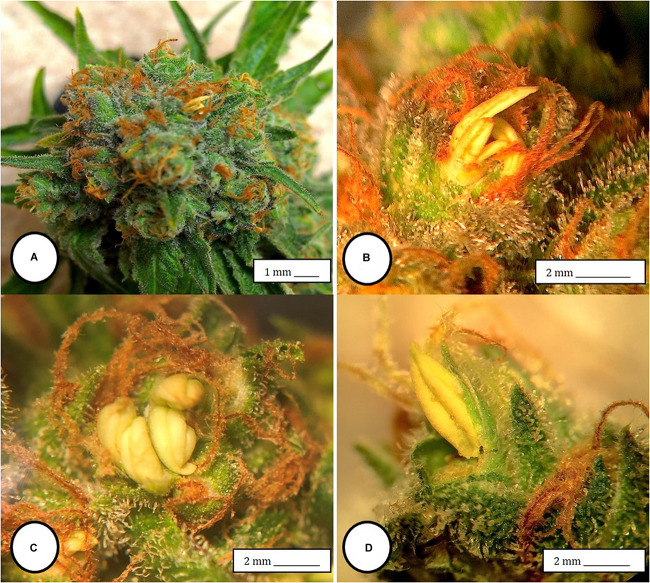
There won’t be any indication of hermaphrodite tendencies throughout the vegetative stage, so growers can’t predict whether a plant will become hermie during that time. Growers can only begin to watch for hermies once the flowering phase starts and the plants display their sex. It’s crucial that you first comprehend how to sex your cannabis plants and the differences between male and female plants in order to be able to recognize the early warning symptoms of a hermie.
How to sex cannabis plants
Traditionally, growers used visual signs of cannabis plant sex to determine male and female plants. The signs include tiny, smooth, egg-shaped pollen sacs on males and small V-shaped pistils with white or pink hairs for females. However, those visual methods are not foolproof, are labor intensive, and can’t be performed until several weeks after germination.
Alternatively, DNA-based testing can identify male cannabis plants just one week after germination. Testers can easily extract DNA from a leaflet with a simple boil prep, which is then tested for the presence of a y-chromosome using the FemINDICAtor qPCR Pant Sex detection assay. If detected, males can be removed before they ever leave the seedling tray.
Growers can test cannabis plants for gender for less than $5 per sample if they have a qPCR instrument and a simple in-house lab setup. Growers also have the option of sending leaf samples to testing facilities that offer sex testing as a service. Services for cannabis sex testing can range in price from $10 to $15 per plant, depending on the supplier and whether volume-based discounts are available.
Can DNA-based Plant Sex Tests Identify Hermies?
Unfortunately no. DNA-based plant sex tests, such as FemINDICAtor, are designed to detect the presence of the male sex chromosome, the Y-chromosome. Hermaphrodite cannabis plants are genetic females that produce pollen in response to stress. Therefore, they would test negative on a DNA-based plant sex test.
Ready to Start Cannabis Plant Sex Testing?
FemINDICAtor qPCR assays eliminate all uncertainty in cannabis plant sex identification and provide results weeks ahead of visual methods. Early identification frees up time, money, and resources so growers may focus on valuable females instead of cultivating male plants. With this method, producers can also utilize conventional seed, which might be less likely to herm than feminized seed.
A number of commercial growers have invested in qPCR tools and supplies so they may perform in-house tests for various genetic traits, such as plant sex and diseases. If you’re not ready to commit the money, there are several testing facilities that use Medicinal Genomics reagents and provide sex testing as a service. Contact Us and we’ll put you in touch with one of those labs!

